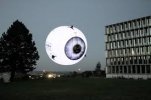RGS2010
Well-Known Member
Way back when the DJI Mini 2 first came out AND before I realized that BVLOS was not allowed by the FAA AND before I got my Part 107 and became air aware...
I flew 12,000 feet down range at about 300 feet altitude way out in uncontrolled airspace in the country. It came back with only electron fumes but it made it. DJI makes the best drones...I just wish they wouldn't lurk in my software to take my info to their servers or stop me from taking off in my own country!
I flew 12,000 feet down range at about 300 feet altitude way out in uncontrolled airspace in the country. It came back with only electron fumes but it made it. DJI makes the best drones...I just wish they wouldn't lurk in my software to take my info to their servers or stop me from taking off in my own country!











